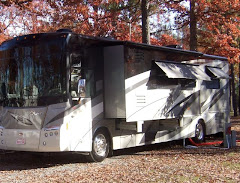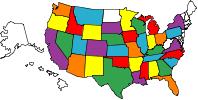
We’ve spent the first few days of our stay chilling out at Zion River Resort. It’s a great spot about 15 miles west of Zion National Park in Virgin, UT. This lovely park sits right on the Virgin River.
Lucky site #13 is the place we’re calling home these days. It’s long, level and well-shaded. The staff is friendly and the neighbors are great. If we can stand the heat, we think we’re really going to like it here. And, so far, the heat hasn’t been too bad.
We finally ventured into Zion National Park today. We spent five glorious days here three years ago on our first-ever RVing trip. On that visit, our exploration of Zion was limited to the sights and trailheads that could be reached by Zion’s fantastic shuttle system that takes visitors into the canyon. Since then, we’ve been looking forward to coming back and seeing the parts of the park we missed the first time. With Rocky as our guide, we set out to see the Zion Tunnel and the eastern side of the park. Just after leaving our RV park, we spotted these signs that warn visitors about the tunnel. Large vehicles require an escort and a $15 fee for the privilege to pass through. We stopped and checked the measurements. Looks like our moose is just a bit too tall. But, our nimble little squirrel can make it through just fine!
We broke off from the Shuttle Route and headed up the Zion-Mt. Carmel Highway (Utah State Highway 9) toward the tunnel. This was unchartered territory for us, and the view of the Towers of the Virgin and the Altar of Sacrifice were magnificent.
We climbed up several narrow switchbacks, then the road disappeared into the canyon wall. The Zion-Mt. Carmel tunnel is not for the squeamish. It’s a just over a mile-long stretch of narrow and very dark road. And, when you head from west to east, it’s a climb. Even if Bullwinkle could fit, we wouldn’t make this drive in the moose. Never, ever!
At last, we saw light at the end of this tunnel! This time of year, daytime traffic is generally restricted to one-lane. With so many vacationers pulling trailers and driving RVs, even small ones, the National Park Service takes extra steps to keep the tunnel safe.
The scenery through the tunnel is distinctly different from the inside the canyon. The lighter, smoother landscape stands in stark contrast to the jagged red canyon walls. The most notable spot on the park’s eastern side is Checkerboard Mesa, a well-weathered sandstone mountain bearing a cross-hatch pattern that gives it its name. Millions of years of erosion have produced this impressive work of art.
Now that we’ve seen the eastern side of this beautiful park, we’re looking forward to exploring more parts unseen (for us, anyway) over the next few weeks.












1 comment:
Love your pictures! We plan to visit this area during the summer/fall of 2012.
Post a Comment